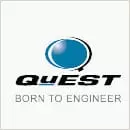The engineering services industry has evolved over the last 20 years in India. Currently there are approximately 6000 engineering services organizations in the country. Over this period, customer expectations and service offerings from suppliers have changed. After the success of IT outsourcing success, we saw many companies starting outsourcing their engineering efforts for various reasons: primarily reduced cost. Another reason was the availability of young engineers in India who are savvy about software tools used for Computer Aided Design (CAD) and Computer Aided Engineering (CAE). During the initial stages, customers helped Indian companies train their engineers on domain knowledge and spent much amount of time guiding engineers during the entire process. Now, customers’ expectations have changed significantly. Following are some of the emerging trends in outsourcing:
Evolution of Business Models
Earlier days of outsourcing were more to do with parameters such as number of engineers (bodies) outsourced to countries like India. Hours and cost were typically tracked. Now, most of the customers are moving towards fixed bid model, where they give entire specification and expect service providers to deliver end results; with this they can have tighter control on the budget. Also some of the customers have started involving service providers in discussion with their end customers and expect them to provide solutions for their end customers’ needs. Outsourcing has evolved from body shopping to managed services.
India has talented engineers in the 0-5 year’ experience range. However, engineers with 10-20 years of domain experience are difficult to find, particularly in the area of aerospace and aero engines. Domain expertise being available in high cost regions, required resources to audit and certify the output can be sourced from such high cost regions. On the other hand, resource capacity needed for the program is provided from emerging countries such as India. Most of the companies in India have teams that are predominantly India centric because they started from their core business of IT. A service provider would have a unique positioning if it is able to offer the dual advantage of local-global services.
Engineering Capabilities and Product Development Ownership
Many customers look at the local needs of India and explore the option to localize their product offering to the Indian market. India’s 60% of engineering exports are contributed by captives set up by OEMs. Some are extremely successful and some are not. In this competitive scenario, it is very important to develop capabilities up the service value chain and across the product life cycle since the current engagement of service providers is more task based and small fixed bids. A collaborative partnership between the captives and the engineering service providers is definitely the way forward. There could be a possibility of integration as well where the captives struggle to scale up in India.
ESOs are expected to help customers ideate the new products to suit the local market. There is a huge market for rural healthcare. Healthcare equipment/products to be developed to suit local conditions are much needed. There are various constraints that need to be considered when designing products for local conditions. Especially in health care, such issues assume safety critical significance. Similar such peculiar local conditions can be understood by local providers, and becomes an advantage for local companies. Local innovation is a key to create revolution in product development. Replicating the same in other similar markets can create value in multiple folds.
Combination of IT & Engineering as a Total Solution
Many customers particularly in Automotive and other domains expect service providers to design an overall solution that is a combination of engineering and IT. Products are going the digital way underlining the need for such hybrid solutions. Called NMAX (Network, Mobility, Analytics, cloud and security and sensors), auto electronics dominate the engineering space and make the most of the existing systems. ESOs are expected to develop intelligent systems that combine the capabilities of networking, mobility, pool lot of data, perform analytics, get some trends on the data, process these info on cloud and provide meaningful experience to consume, which is of much value for the decision makers to run the business. Many such solutions are currently outsourced by customers; engineering service providers can consider offering such services that combine the best of engineering and IT services.
Geographic Focus
While Indian companies have almost exploited US and Europe, new geographies like Korea, China, other Asia Pacific countries, Japan, and Nordic countries need to be explored. Several opportunities exist which could be tapped.
To conclude, local-global approach, and looking for the skill-cost-scale are the key. So a quick alignment to on-going change is much needed.
